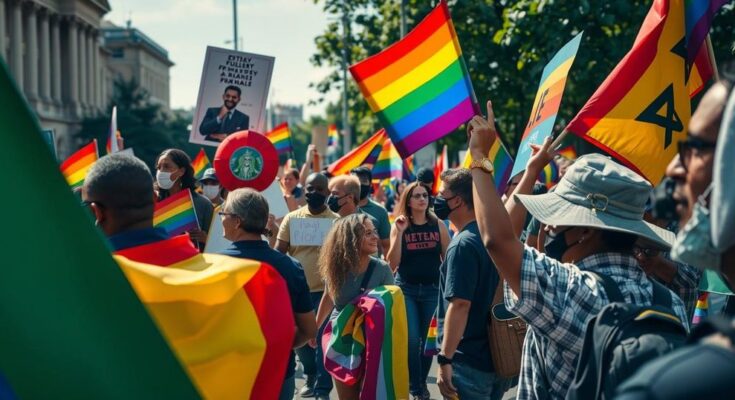Indigenous Peoples’ Day has evolved into a federal celebration of Native cultures, recognized on the second Monday of October. From its origins as a protest against Columbus Day, this day now highlights the contributions and resilience of Indigenous peoples. Celebrations across various states, including dance performances and community workshops, reflect a growing visibility and appreciation for Native heritage.
Indigenous Peoples’ Day, celebrated on the second Monday of October, has transformed from a mere protest against Columbus Day into a vibrant celebration of Native cultures across the U.S. On October 14, Native communities showcased their rich traditions, marking a special day recognized federally by President Biden’s proclamation in 2021, honoring Indigenous heritage and contributions. The President’s message emphasized that Indigenous peoples have long nurtured diverse cultures, maintaining deep connections to land and tradition. His proclamation acknowledged the resilience of tribes and the commitment of the federal government to honor its treaty obligations. Currently, 17 states observe Indigenous Peoples’ Day or Native American Day, particularly those such as Alaska, California, New Mexico, and Oklahoma, where Indigenous populations thrive. Alaska’s festivities included mesmerizing dance performances and cultural workshops, highlighting the importance of community engagement. New Mexico’s celebrations—a spirited mix of dances, music, and culture—transformed places like Albuquerque and Santa Fe into vibrant hubs of Indigenous pride. Participants came together to celebrate their heritage, exemplified by dance groups reflecting their diverse traditions. In Oklahoma, the Muscogee (Creek) Reservation hosted events at multiple venues, uniting tribal citizens in joy and cultural expression. These gatherings celebrated the community’s spirit and commitment to preserving their identity amid changing times. California saw its own colorful celebrations, notably on Alcatraz Island, resonating with historical significance and cultural reclamation. As the state recognized Indigenous Peoples’ Day in its sixth year, local leaders reflected on the cultural richness of tribes that continue to thrive within its borders. Each year, the visibility of Indigenous Peoples’ Day amplifies, transforming its roots as a protest into a day celebrated by tribal communities nationwide. This national acknowledgment celebrates the enduring spirit and contributions of Indigenous peoples, marking a significant step in honoring their heritage.
Indigenous Peoples’ Day arose as a response to the historical celebration of Columbus Day, which many Native communities view as a painful reminder of colonization. The movement seeks to honor Indigenous history, culture, and contributions while promoting awareness of their rights and struggles. Federal recognition of the holiday in 2021 highlights an increasing acceptance and celebration of Indigenous identities across the United States, encouraging deeper understanding and respect for Native cultures.
Indigenous Peoples’ Day celebrates the rich cultural heritage of Native communities and acknowledges the historical injustices faced by Indigenous peoples. With growing recognition and celebrations across various states, this day fosters unity and pride within Indigenous cultures, paving the way for a future where their contributions are honored and remembered. It signifies a shift from protest to celebration, elevating Indigenous narratives in the national consciousness.
Original Source: www.mvskokemedia.com



